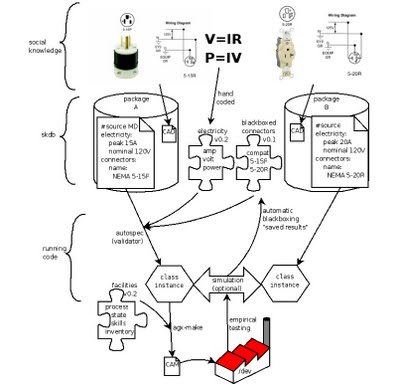In the highly complex world of software management there are monstrously complicated systems composed of in some cases hundreds of thousands of components, layered together in an intricate manner. All software pieces must interact faithfully using common conventions.
This is managed today by using numerous computing standards and advanced software management. That means “management software” keeps track of all these components to ensure the correct components fit together in the right sequence. Many systems today are so complex their management is literally beyond human comprehension.
Through the use of these advanced software management tools and techniques (think GIT or similar utilities), today’s software has leapt into overdrive, with thousands of new applications appearing every day, created by both large teams and individuals. The management approach has allowed makers to take advantage of things that have already been built.
But that’s software.
The Austin guys observed this huge software success and wondered if a similar approach could work for “real things”. And that’s precisely what SKDB is: a method of keeping track of hardware designs such that they can be easily found and assembled into useful objects.
It’s clearly still in the research and development stage, but we feel that this approach could begin to make sense for many of the 3D model repositories currently emerging. While the file formats are known within these repositories, how do (or could) all these models fit together? Is there standard groupings of “parts” that can be re-used and re-mixed to create higher level designs? We think yes.
We know you want more info, and there’s plenty of information at the SKDB wiki, and an overview presentation, too.
Via SKDB Wiki and SKDB presentation (PDF) (Hat tip to Bryan!)


